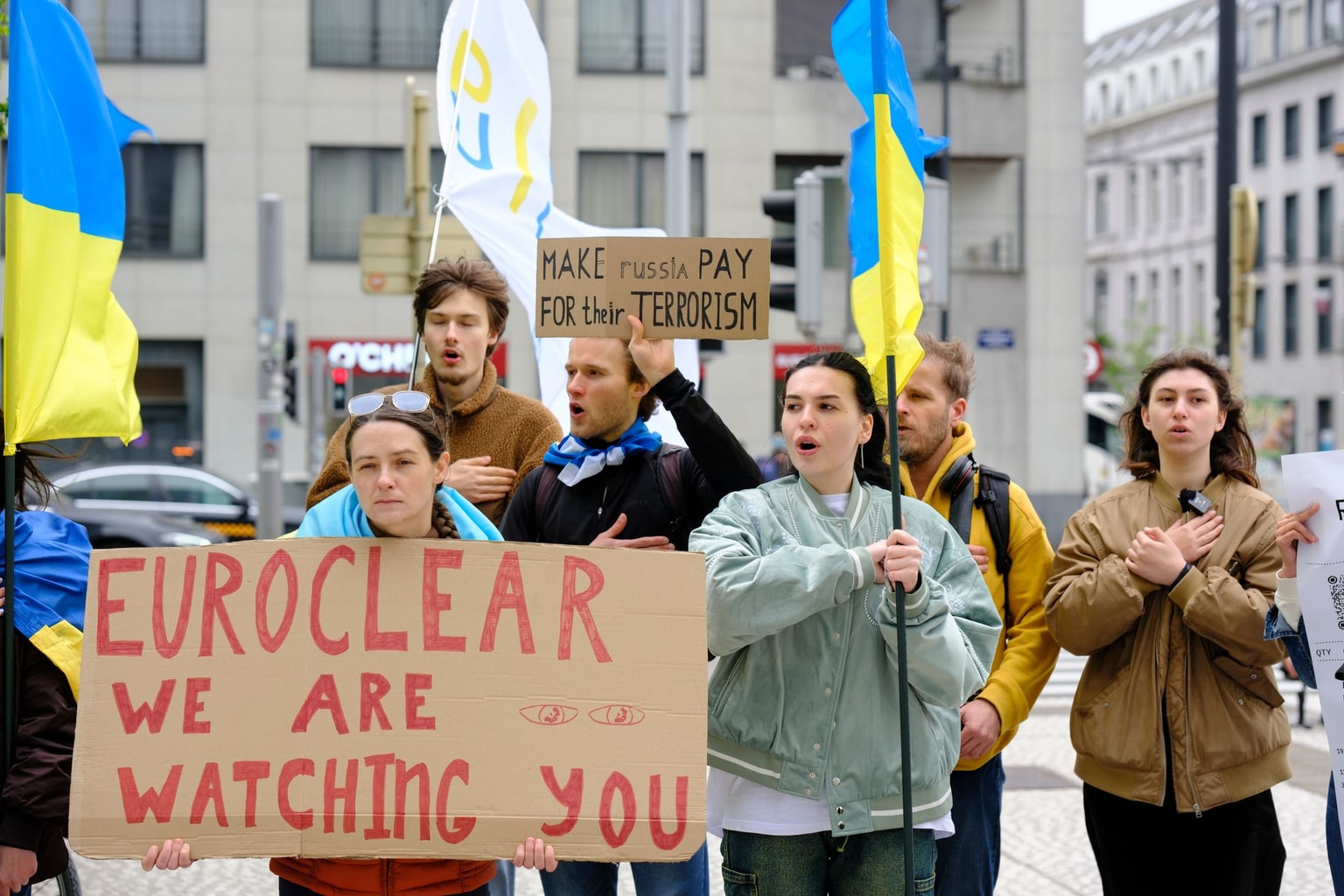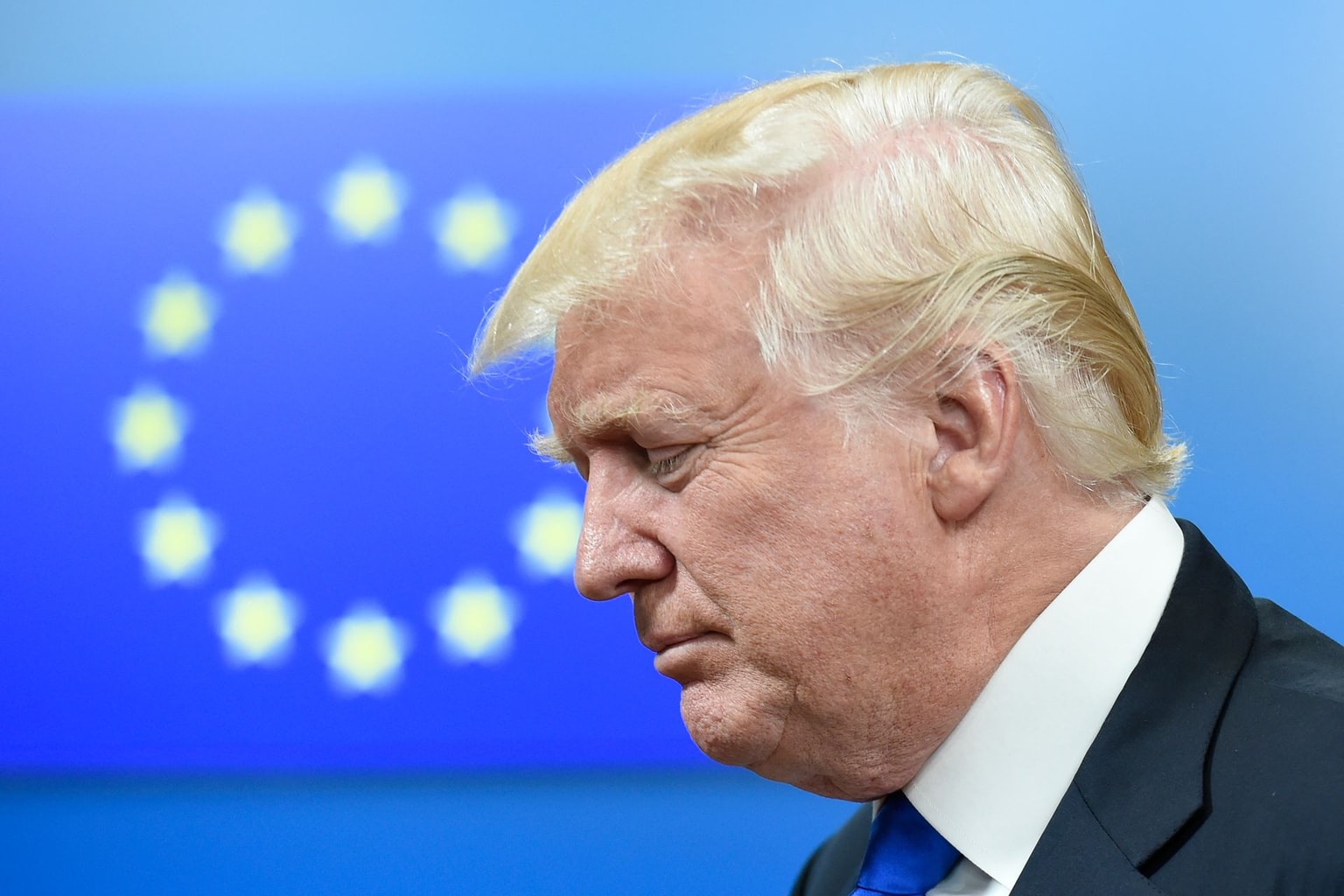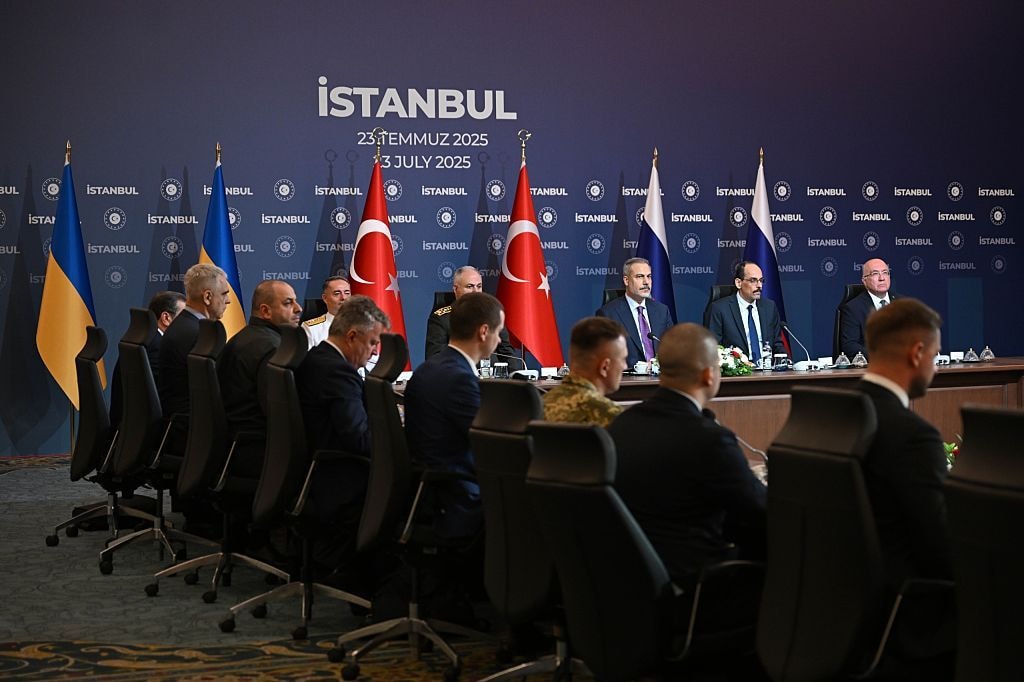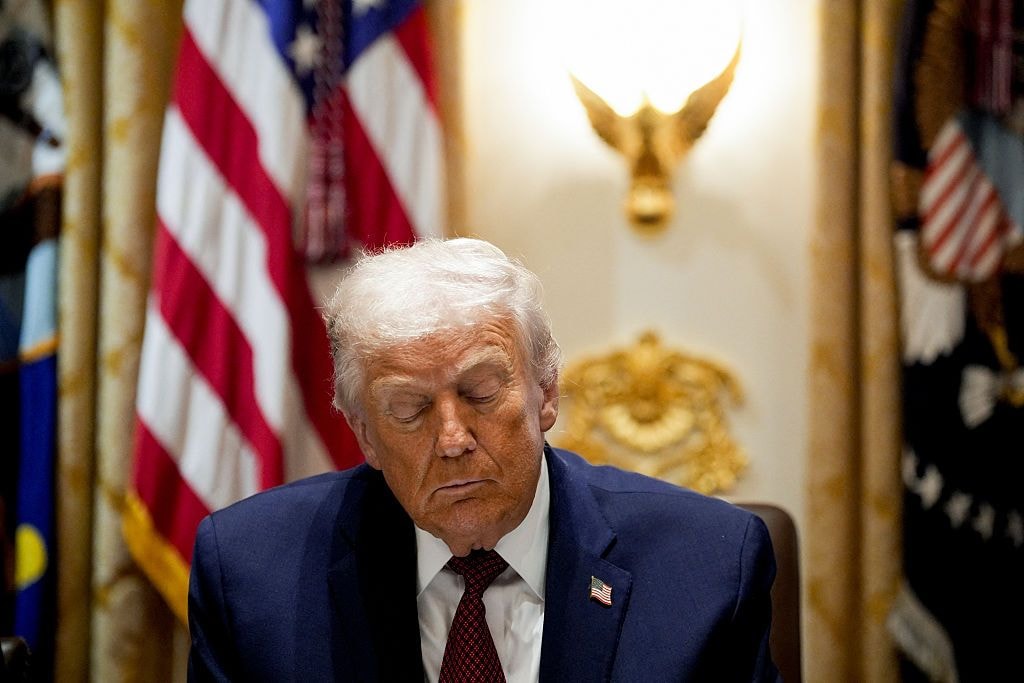Ukraine war latest: Over 100 Ukrainian POWs returned from Russian captivity, Russia strikes Kharkiv

Key developments on Sept. 14, 15:
- 103 Ukrainian POWs returned from Russian captivity, including 23 Azov fighters
- At least 1 killed, 42 injured in Russian strike on apartment building in Kharkiv
- Western aid not enough to equip 'even 4 out of 14' underarmed brigades needed on the front, Zelensky says
- Zelensky's office denies report that victory plan includes ceasefire along existing lines
- Germany won't allow long-range strikes on Russia even if other countries do, Scholz says
- ATACMS restrictions subject of 'intense consultations' between Ukraine and allies, Sullivan says
- Ukraine launched production of 155-mm artillery shells, official says
President Volodymyr Zelensky announced that 103 Ukrainian POWs were returned from Russian captivity on Sept. 14.
"Our people are home," he said in a post on social media.
In a separate post, the Azov Angels charity fund said 23 of those released were Azov fighters, returning "after more than two years of captivity."
Azov fighters became a symbol of Ukraine's resistance through their tenacious defense of the Azovstal steel plant in Mariupol in the first three months of the all-out war.
Russian forces eventually occupied Mariupol in May 2022, capturing the remaining defenders.
Zelensky said the released POWs consisted of 82 privates and sergeants, and 21 officers, adding they were "defenders of Kyiv and Donetsk oblasts, Mariupol and Azovstal, Luhansk, Zaporizhzhia, and Kharkiv oblasts. Warriors of the Armed Forces of Ukraine, the National Guard of Ukraine, border guards, and police officers."
"The vast majority of those released are people who had been held (in captivity) since the first days of the war," said Ukraine's Ombudsman Dmytro Lubinets in a statement. Lubinets stressed that people who returned need serious rehabilitation, as their health has deteriorated severely during captivity.
Previously, the United Nations commission published several reports describing the torture of Ukrainian POWs as "widespread and systematic," and the conditions of their detention as "shocking." Some Ukrainian POWs died in captivity from causes such as "blunt force trauma".
This is the 57th prisoner exchange since the outbreak of the full-scale war, and the second exchange carried out in the last two days.
Earlier on Sept. 13, 49 Ukrainian soldiers and civilians were released from Russian captivity. They included personnel of the Armed Forces, the National Guard, the National Police, and border guards.
A total of 3,672 Ukrainians have been brought back from Russian captivity.
Kyiv aims to conduct an all-for-all prisoner exchange, which was one of the subjects at Ukraine's peace summit in Switzerland in mid-June.

At least 1 killed, 42 injured in Russian strike on high-rise in Kharkiv
One woman, 94, was killed, and 42 people were injured in a Russian air strike that hit a 12-story apartment building in Kharkiv and caused a fire, authorities reported on Sept. 15.
Among the injured were three children, the youngest being one year old.
President Volodymyr Zelensky shared photos of the damage on his Telegram channel, saying rescue operations were ongoing and that the fire had spread through the 9th through 12th floors.
Kharkiv Oblast Governor Oleh Syniehubov said three children were among the initial estimated 25 injured. He later raised the toll to 35, and then to 42, and said that at least three were in serious condition. Twelve people were hospitalized, and more people are under the rubble, Syniehubov said.
Police received a report of at least one missing person that could be under the rubble, said Ihor Klymenko, interior affairs minister.
According to him, one of the building's residents refused to evacuate without his dog, so the State Emergency Service workers rescued both the man and his pet from the smoke-filled apartment on the 12th floor.
The police set up an operational headquarters at the scene, with residents filing more than 30 reports of property damage, he said.
At least 1,500 windows and dozens of cars were damaged, according to Syniehubov.
Shortly before the reported strike, the city's mayor, Ihor Terekhov, warned that Russia had launched several KABs, or guided bombs.
Western aid not enough to equip 'even 4 out of 14' underarmed brigades needed on the front, Zelensky said
Ukraine hadn't received enough military aid from the foreign partners to equip "even four out of 14" Ukrainian army brigades that the country "needs to be ready," President Volodymyr Zelensky said in an interview with CNN on Sept. 15.
Zelensky didn't specify what the 14 brigades would be used for, or where they will be dispatched.
Throughout the interview, Zelensky used other examples to underscore that the Western aid sent to Ukraine is not enough to prevent devastating Russian attacks on Ukrainian cities and to "be in a strong position for diplomacy." He also emphasized that the aid shipments are slow to follow after partners pledge them.
"During this 8-month pause before the positive decision of the U.S. Congress (to provide the $61-billion aid package last April) — what we did, everybody has to understand: We used everything we could," Zelensky said.
"We moved (to use) what we had in storages, and whatever the reserve brigades had – (those brigades that) we need now (to fight)," he added.
Zelensky also defended the Ukrainian military command's decision to launch the Kursk incursion into Russia in August to divert Russian troops there, rather than keep Ukrainian forces in the eastern Pokrovsk direction, where Russian army was making relatively rapid territorial gains over the past weeks.
Zelensky said that it didn't matter how many brigades were defending the east, if "half of them is not equipped." Specifically, he said they were lacking armored vehicles and artillery shells, as Russian forces fired 12 times more rounds than Ukrainian troops.
In an earlier interview with Bloomberg on July 4, Zelensky said that 14 brigades in Ukraine's Armed forces remain unequipped with necessary weapons that the U.S. Congress already voted to send to Ukraine, but that are slow to come.
He mentioned that these brigades could be used for Ukraine's counteroffensive if they had been properly equipped.
"We have the desire (for a counteroffensive), but the tools have not come," Zelensky told Bloomberg.
In a BBC interview, Zelensky said that Russia launched 4,000 guided aerial bombs per month in the east of Ukraine, and destroyed 80% of the country's energy infrastructure, because the U.S. are hesitant to allow Ukraine to strike the airfields deep in the Russian territory, where the jets launching the bombs are stationed.
"We waited too long," he said, "Russia is beginning to move these jets from 100-150 kms, 300 kms (distance from the Ukraine-controlled territory) to 500 kms."
"After that, I will tell you, now we need more permissions," Zelensky said.
As of now, Ukraine doesn't have the permission from the U.S. to use the West-provided weapons to strike inside Russia, he added
Zelensky's office denies report that victory plan includes ceasefire along existing lines
An advisor for President Volodymyr Zelensky denied a news report suggesting Zelensky's new victory plan will include a partial ceasefire, calling it a "fake."
Zelensky has said he will present the United States with a plan for Ukraine's victory later this month during a meeting with Biden.
Responding on Sept. 15 to an article published by Germany's Bild newspaper, Presidential Communications Advisor Dmytro Lytvyn told Ukrainska Pravda that the claim was untrue.
"Bild spread a fake," Lytvyn said. "Bild has not seen the victory plan, and of the few people who are currently involved by the president in the preparation of the Victory Plan, none of them spoke to Bild."
"Ukraine is against any freezing of the war, and this is said at all levels of the Ukrainian leadership. And it is important for us that the United States supports Ukraine's Victory Plan, not capitulation or freezing," Lytvyn said.
He added that the United States would be the first partner presented with the plan.
Officials have so far been tight-lipped about the plan's details.
Last month, Zelensky said that Ukraine's operations in Kursk were part of his plan for victory.
The other aspects of the plan include Ukraine's participation in the global security infrastructure, pressuring Russia to end the war through diplomatic means, and an economic aspect, Zelensky said without revealing further details.
Ukraine is preparing for a second peace summit, following its inaugural global peace summit in Switzerland in June where Russia was excluded.
Kyiv has said it aims to invite a Russian representative to the second conference.
Kyiv has repeatedly rejected any ceasefire or temporary break in hostilities, saying it would only provide a window of opportunity for Russia to regroup its forces.
Germany won't allow long-range strikes on Russia even if other countries do, Scholz says
Germany will not allow Ukraine to launch attacks with German weapons far behind the front "even if other countries decide otherwise," German Chancellor Olaf Scholz said.
His statement comes shortly after U.S. President Joe Biden and U.K. Prime Minister Keir Starmer stopped short of lifting restrictions on using Western-supplied long-range weapons on Russian territory during their meeting in Washington on Sept. 13, while media continue to report on encouraging signs that the ban might be reversed.
Scholz said during the public talk in Prenzlau, Brandenburg that Germany "will continue to support Ukraine militarily" so that the country "does not collapse," German media Welt reported.
However, Scholz stressed that he would remain opposed to the idea of Ukraine using German long-range weapons to attack targets deep inside Russia.
"I am sticking to my position, even if other countries decide differently," Scholz said.
Commenting on media reports that the U.S. could lift the existing restrictions, he said that not all speculations are correct, according to Welt.
Restrictions on the usage of U.S.-made and provided ATACMS (Army Tactical Missile System) are "the subject of intense consultation among allies and partners, and will be (discussed) between President (Biden) and President Zelensky," U.S. National Security Adviser Jake Sullivan said on Sept. 14.
According to earlier media reports on Sept. 11, Biden was said to be finalizing the details of the plan to lift some restrictions, while the U.K. had reportedly privately decided to allow Ukraine to use its British-supplied Storm Shadow missiles for long-range strikes, though no public announcement had been made.
Meanwhile, German media Spiegel reported on Sept. 13 that the debate is also ongoing inside the German parliament on whether Ukraine should be provided with German long-range missiles Taurus, with politicians from the FDP and the Greens supporting the decision.
Ukraine has long been urging the West to lift the ban on striking military targets deep inside Russia.
On Sept. 13, President Volodymyr Zelensky said in his speech at the YES conference that without the ability to strike inside Russia, U.S.-provided ATACMS (Army Tactical Missile Systems) are "pointless."
ATACMS restrictions subject of 'intense consultations' between Ukraine and allies, Sullivan says
Allowing Ukraine to use ATACMS to strike targets deep inside Russia is the subject of "intense consultations," U.S. National Security Adviser Jake Sullivan, said on Sept. 14.
Speaking at the Yalta European Strategy conference in Kyiv, Sullivan reiterated that no decision had yet been made, a day after U.S. President Joe Biden and U.K. Prime Minister Keir Starmer met in Washington to discuss the issue.
Ukraine had been hoping for permission to be granted during the talks to use two Western-supplied long-range missiles – Storm Shadow and ATACMS – to strike military targets such as airfields located deep inside Russian territory.
But Starmer left Washington with no such announcement being made, putting Kyiv's hopes on hold once again.
"I understand Ukraine's perspective on it," Sullivan said, adding: "But rather than me trying to elaborate on the reasoning one way or the other, this is something that I think is the subject of intense consultation among allies and partners, and will be (discussed) between President (Biden) and President Zelensky."
Zelensky is due to travel to New York later this month for the United Nations General Assembly.

Speaking at the same conference a day earlier, Zelensky said the U.S.-supplied long-range ATACMS missiles are "pointless" in Ukraine due to their limited quantity and restrictions on strikes deep inside Russia imposed by Western partners.
The U.S. began providing Ukraine with Army Tactical Missile Systems (ATACMS), which have a range of up to 300 kilometers (190 miles), in the spring.
While these missiles have been used in Russian-occupied Crimea, Washington's restrictions prevent their use on Russian soil.
"ATACMS in the form that we have today (in Ukraine) is pointless if you cannot use it on their (Russian) military bases, airfields with helicopters and airplanes. It's pointless," Zelensky said.
"If ATACMS has a big restriction on the use of missiles because there are few of them... Unfortunately, it doesn't work."
The NYT reported that it's likely a decision will be made about Storm Shadows before one is reached over ATACMS.
While Ukraine has been pleading for permission for months, it's understood the stance of Western nations has changed in light of Iran supplying Russia with ballistic missiles.
"We've now seen this action of Russia acquiring ballistic missiles from Iran, which will further empower their aggression in Ukraine. So if anyone is taking escalatory action, it would appear to be Mr. Putin and Russia," U.K. Foreign Secretary David Lammy, said while visiting Kyiv earlier this week.
Lammy added that Iran supplying ballistic missiles to Russia "clearly changes the debate" around the issue, as it allows the Kremlin to gain "further penetration into Ukraine."
Zelensky is also expected to present Biden with a plan for Ukraine's victory against Russia, which will also be presented to Vice President Kamala Harris and ex-President Donald Trump, the two candidates for the upcoming November presidential election.
"I do think we need a comprehensive strategy for success in this war and that is what President Zelensky says he's bringing," Sullivan said.
"And so we're very much looking forward to sitting down and talking that through, and President Biden is eager for that conversation.
"And it's only right that it be President Zelensky who brings that because it is up to the democratically elected government of Ukraine and the people of Ukraine to set out the course of the war, their path to victory."
Ukraine launched production of 155-mm artillery shells, official says
Ukraine already produces its own 155 mm artillery ammunition, said Alexander Kamyshin, newly appointed by President Zelensky as external adviser for strategic issues.
Kamyshin, who resigned from his post as Strategic Industries Minister during the biggest wartime government reshuffle on Sept. 4, told Norwegian media Nettavisen that Ukraine's production of defense material doubled under his leadership.
"By the end of the year, it will have tripled. We continue to drive on," Kamyshin added.
Ukraine has long tried to ramp up domestic ammunition production to become more independent from Western partners. In the summer of 2023, Ukroboronprom said that it had already mastered the production of 82 mm mortar mines, 122 mm, and 152 mm artillery rounds, as well as 125 mm tank shells.
Earlier media reports cited Ukrainian officials hoping to begin producing "desperately needed" NATO-standard 155 mm artillery rounds in the 'second half' of 2024 at the earliest.
"This is a very complicated process. This is something that Ukraine has never done before," Kamyshin said, adding that he "can't say much" on the matter.
Despite domestic efforts, the Ukrainian army still mainly depends on supplying 155 mm shells from partners, as European countries join forces to buy the rounds outside Europe.
The U.S. also opened a new factory last May to produce 155 mm munitions for Ukraine and significantly increased production in some existing factories.











